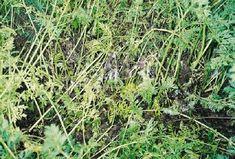
Carrot growers are adopting a new approach to the widespread soil-borne disease Sclerotinia using a range of cultural and chemical solutions, advises both BASF and vegetable consultant Howard Hinds.
Most growers have now adopted an integrated approach to controlling this disease by introducing ways of reducing disease pressure as well as timing chemical control more accurately.
But there are already a number of actions that carrot growers can take and several more that are being developed, according to Hinds of Howard Hinds Crop Consultancy.
“For example, BASF sponsors a Sclerotinia monitoring system that helps carrot growers assess disease risk, predicts when to apply their first fungicide treatments and so helps plan an effective control programme. Starting in June, weekly results are published on Carrot Sclerotinia Monitoring. The service is based on monitoring the germination pattern of sclerotia. Sclerotia germinate usually when soil is moist and temperatures are between 5°C -25°C, with optimum temperatures being 15°C-25°C.”
Robert Storer, field vegetable product manager for BASF, said: “One of the main problems with Sclerotinia is that it has a range of host crops including oilseed rape, potatoes, peas, spring beans, cabbage and carrots. So it is difficult to keep it out of the rotation. With its resting bodies or sclerotia remaining viable in the soil for up to 10 years and acting as a new source each time the soil is cultivated, it is inevitable that this disease has increased in its incidence.”
After the soil-borne sclerotia germinate, they develop small mushroom-type bodies called apothecia which release spores under the crop canopy and these infect senescing plant tissue near or on the soil surface. From there the disease can infect the crop stems and leaves and eventually the root crowns, resulting in core rots.
“It is vital that the first fungicide spray such as Signum is applied early before the foliage has a chance to close over and starts to senesce. Once the disease is in the crop, it is impossible to get rid of it,” said Hinds.